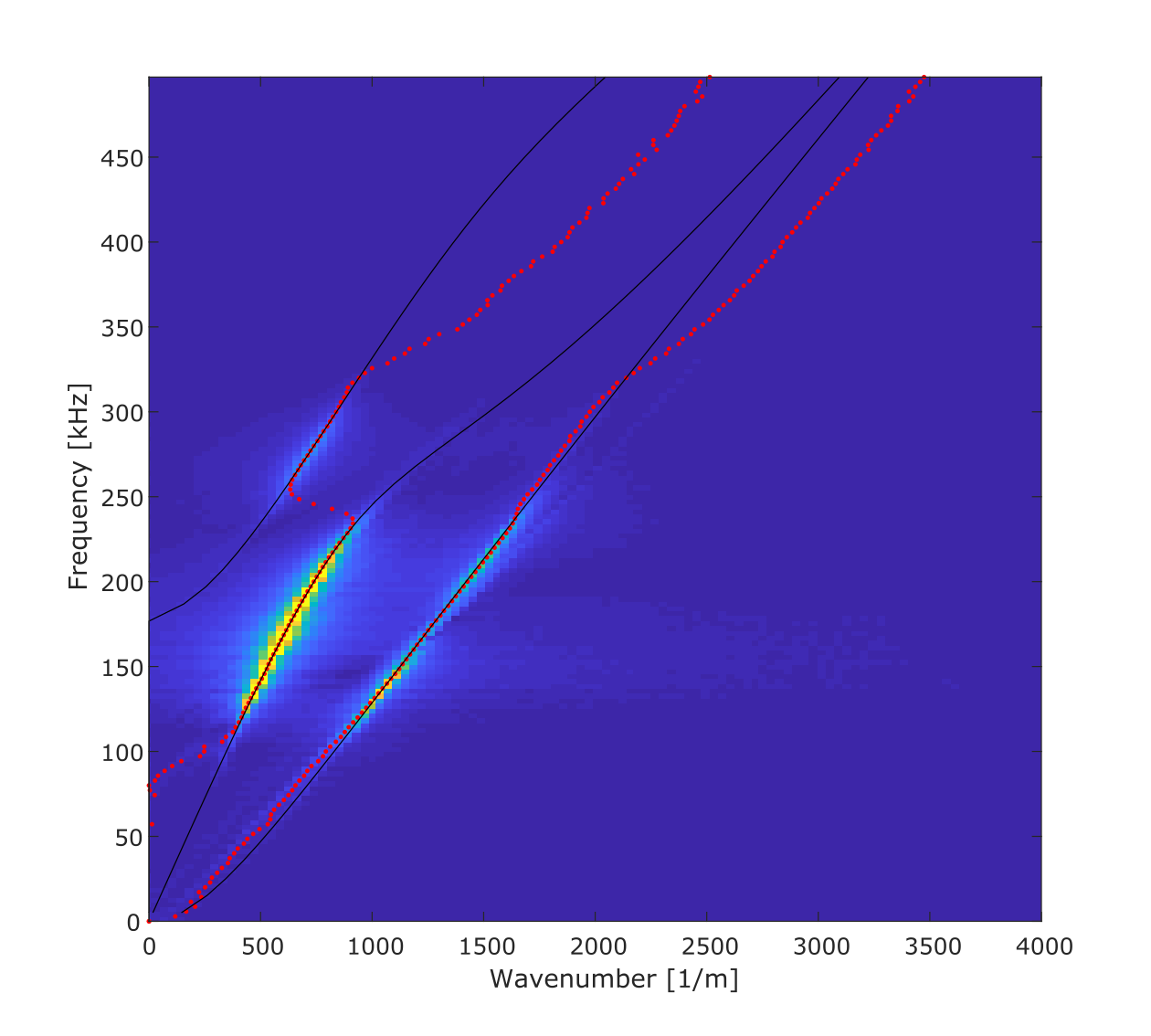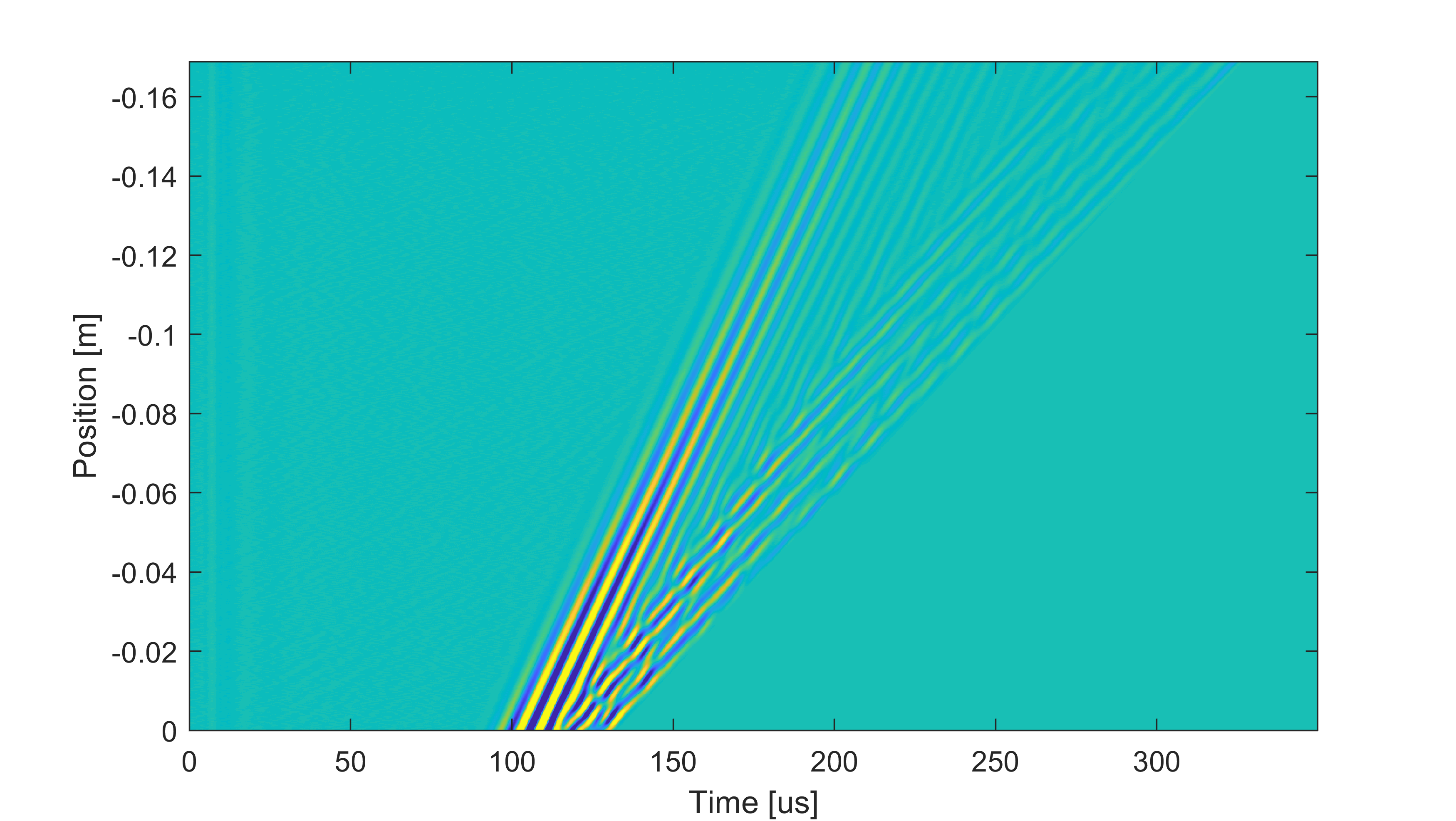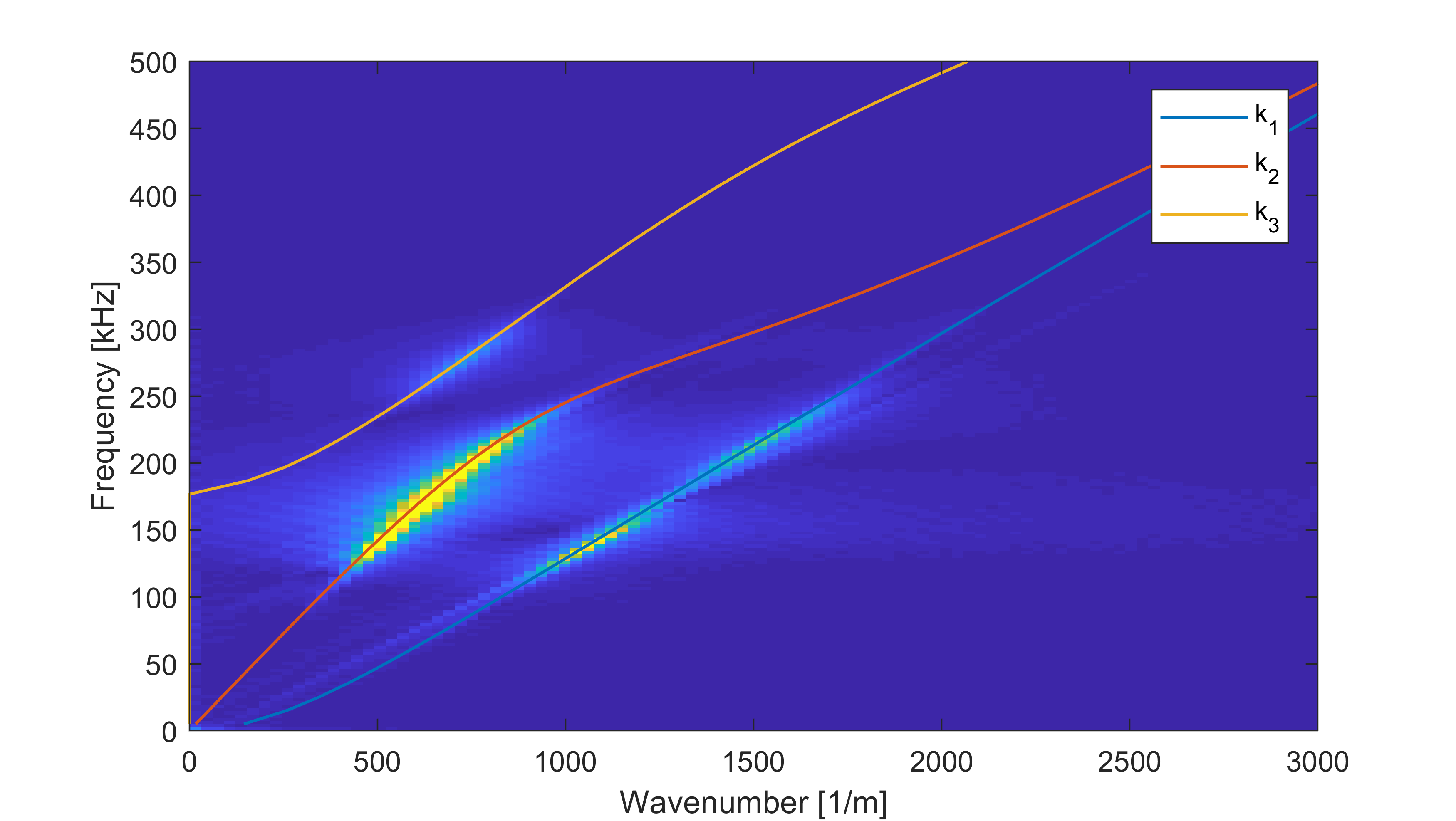 Air coupled ultrasonics is a non-contact inspection technique and therefore provides a great advantage over classical liquid coupled ultrasonic setups.
Air coupled ultrasonics is a non-contact inspection technique and therefore provides a great advantage over classical liquid coupled ultrasonic setups.
It is most suitable for the examination of thin walled structures, where Lamb waves can be used to detect flaws in the specimen material. However, because of the high impedance mismatch between air and specimen, a large part of the ultrasonic wave that is transitioning into the specimen is reflected at the material surface, leading to a much lower signal to noise ratio than in classical ultrasonic setups.
The current focus of the project is to understand the basic air coupled ultrasonic setup, where the sound wave generated by a transmitter travels through the air towards the specimen surface, is converted to a Lamb wave with multiple modes, travels along the plate towards the receiver and is finally detected by the receiver.

The goal is to develop a model that includes all important features and explains the measured signal for a perfect plate specimen. This knowledge can then be used as a reference for the detection of inhomogeneities and flaws.

Knowing the features and limits that air coupled inspections in general provide, in a second step a setup is designed that allows detecting flaws in the specimens that lead to deviations of the received signal compared to the reference.
Signal analysis plays a key role in this process. Algorithms are developed to identify and extract the different Lamb modes from the measurements. Additionally the dispersion relation and material parameters of the specimen can be extracted.

Finally, finite element methods should be applied to detect, visualize and localize possible defects in the specimens.

